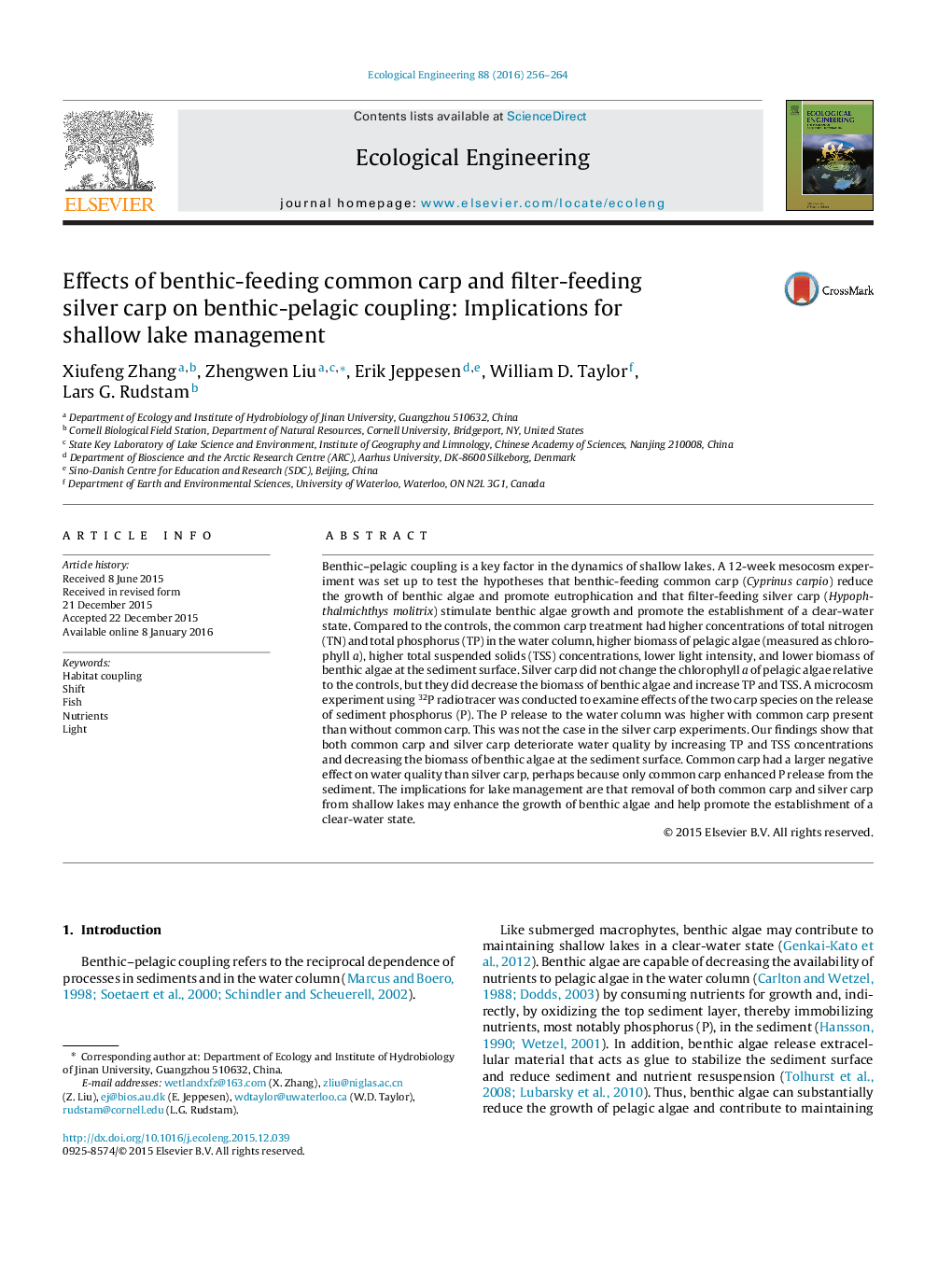| Article ID | Journal | Published Year | Pages | File Type |
|---|---|---|---|---|
| 6301578 | Ecological Engineering | 2016 | 9 Pages |
Abstract
Benthic-pelagic coupling is a key factor in the dynamics of shallow lakes. A 12-week mesocosm experiment was set up to test the hypotheses that benthic-feeding common carp (Cyprinus carpio) reduce the growth of benthic algae and promote eutrophication and that filter-feeding silver carp (Hypophthalmichthys molitrix) stimulate benthic algae growth and promote the establishment of a clear-water state. Compared to the controls, the common carp treatment had higher concentrations of total nitrogen (TN) and total phosphorus (TP) in the water column, higher biomass of pelagic algae (measured as chlorophyll a), higher total suspended solids (TSS) concentrations, lower light intensity, and lower biomass of benthic algae at the sediment surface. Silver carp did not change the chlorophyll a of pelagic algae relative to the controls, but they did decrease the biomass of benthic algae and increase TP and TSS. A microcosm experiment using 32P radiotracer was conducted to examine effects of the two carp species on the release of sediment phosphorus (P). The P release to the water column was higher with common carp present than without common carp. This was not the case in the silver carp experiments. Our findings show that both common carp and silver carp deteriorate water quality by increasing TP and TSS concentrations and decreasing the biomass of benthic algae at the sediment surface. Common carp had a larger negative effect on water quality than silver carp, perhaps because only common carp enhanced P release from the sediment. The implications for lake management are that removal of both common carp and silver carp from shallow lakes may enhance the growth of benthic algae and help promote the establishment of a clear-water state.
Related Topics
Life Sciences
Agricultural and Biological Sciences
Ecology, Evolution, Behavior and Systematics
Authors
Xiufeng Zhang, Zhengwen Liu, Erik Jeppesen, William D. Taylor, Lars G. Rudstam,
